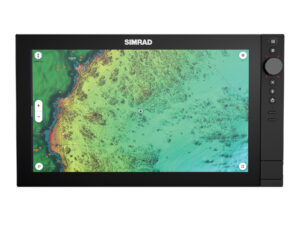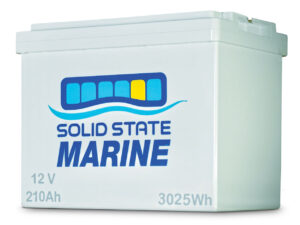When an emergency arises, there’s no time to get out your owner’s manual to learn how to send a distress message. Boating safety begins with preparation. Make sure your emergency electronics equipment functions properly, and that you understand its capabilities and its limitations and know how to use it all in an emergency.
Radio Check
Your VHF radio is the first line of defense in an emergency. With it, you can summon assistance either manually by voice or automatically by digital signaling. An on-the-air radio check quickly ensures that your VHF is operational. Never call the U.S. Coast Guard or use Channel 16 for a radio check. Both are prohibited. Radio checks should be made with another boat or shore station on Channel 9 or any other ship-to-ship channel that is not in use.
DSC Verification
One of the most important yet misunderstood emergency devices you have on board is the DSC (digital selective calling) button on your VHF radio. It can instantly broadcast a digital mayday signal that is received by all DSC radio-equipped vessels and land stations within VHF radio range (typically 10 to 30 miles).
Yet, to function properly, an operating GPS must be connected to or built into your radio. Then you need to obtain an MMSI (Maritime Mobile Service Identity). You can register for one with BoatU.S. (boatus.com/mmsi) or Sea Tow (seatow.com/boating-safety/mmsi) and then enter it into your radio. See your electronics dealer or refer to your manual for guidance.
Next, confirm that your GPS coordinates appear on the display of your radio. This will indicate that you are ready to broadcast an emergency if required. Yet, never attempt to test your radio’s DSC function by depressing the DSC button. This is like dialing 911 to see if it works. There are penalties for false DSC activations.
To test your radio’s DSC operation, find a friend’s boat that also has an MMSI number. Enter that number in your radio’s address book. Then select and send to that number; an audible tone will sound and your ID will appear on your friend’s radio’s display. An acknowledge message will be sent back and displayed on your radio.
The U.S. Coast Guard has put in place an MMSI number (003669999) for testing purposes. It will send you back an automatic DSC operation confirmation. While not currently available in all boating areas, this service is scheduled to be nationwide.
EPIRB and PLB Testing
An EPIRB (emergency position-indicating radio beacon) and a PLB (personal locator beacon) can summon emergency assistance from almost anywhere. Both have built-in self-test functions to let you know if they’re ready for emergency duty.
Self-tests usually consist of a series of beeps and lights in a specific order usually ending with a strobe-light flash. This not only tests the battery but also verifies that all the internal electronics are working properly.
Self-testing instructions are usually printed right on the case of the EPIRB or PLB. It is a good idea to review this test procedure in your owner’s manual. The U.S. Coast Guard suggests that you perform a self-check about every month during the boating season. However, many PLB models limit the number of self-checks that can be made to save battery power (refer to your manual).
Man-Overboard Drill
Every GPS/chart plotter has an MOB (man overboard) function. When activated, a direct course is plotted back to the exact spot where a man-overboard situation has occurred. Use this function to hold a man-overboard drill. Designate someone to throw a life jacket overboard at an unannounced time during a trip and yell “man overboard!” This is a good way to practice for a real emergency and test your response time to return to that MOB.
Practicing boating safety and regularly testing your emergency electronics will help make your response second nature.
Quick Tip: Sea Tow offers an automated radio check service to test your VHF radio. Check for the channel to use in your area.







